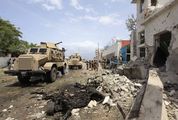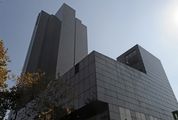YANGON — Interest in Myanmar has become intense. In May Thein Sein became the first president of Myanmar to visit the White House in nearly 50 years, and leaders including British Prime Minister David Cameron, India’s Manmohan Singh and Japan’s Shinzo Abe have visited Yangon.
Indeed, after years of absence, foreign governments are rushing to reopen their embassies in the country. Moreover, multilateral organisations and former ministers from around the world are flocking to help the authorities make progress on their ambitious agenda, from expanding electricity provision to building their own governing capacity. Investors, too, are actively exploring opportunities.
This focus is not surprising. After years of economic isolation and anaemic growth, Myanmar is one of Asia’s last largely untapped markets. Now that the country is opening up, investors are clearly hoping to establish sources of structural advantage that could last for many years.
But can investing in Myanmar live up to today’s soaring expectations? There are undoubtedly major uncertainties and risks. Investors are rightly nervous about how political reform will evolve; whether the government can maintain the fragile peace between ethnic groups; and how regulation and ownership rights will develop. Moreover, it is difficult to quantify the economy’s potential, given the paucity of reliable data; even basic indicators such as population size and historical economic growth are shrouded in uncertainty.
There is little doubt Myanmar begins its development journey from a shockingly weak starting point, as a new report from the McKinsey Global Institute (MGI) demonstrates. Indeed, the country was virtually untouched by the global economy’s spectacular growth during the 20th century. While global per capita gross domestic product (GDP) quadrupled around the world, Myanmar’s was virtually flat.
Moreover, productivity is low. A worker in Myanmar added only $1,500 of economic value, on average, in 2010 — about 30% of the average of eight Asian peers. Myanmar’s GDP is now only about 0.2% of Asia’s, equivalent to the size of cities such as Bristol, Delhi or Seville.
Myanmar needs a step-change in productivity growth. Given expected demographic trends and historic labour productivity growth, annual GDP growth could be less than 4%, lower than the current consensus. But if Myanmar were to boost annual labour productivity growth from an estimated 2.7% to about 7% — a rate achieved by other Asian economies, including China and Thailand, in recent decades — then 8% annual GDP growth would be possible. This could quadruple the size of the economy by 2030, with annual output rising to more than $200bn, from $45bn in 2010.
But it is virtually inconceivable that Myanmar could achieve such acceleration in growth without large volumes of inward investment. The MGI research estimates that $170bn — as well as the transfer of capabilities and knowledge that typically accompany such investment — is needed between now and 2030.
Thus far, much of the interest among investors has been focused on Myanmar’s energy and mining sectors — no surprise, given the country’s large reserves of oil and gas, its 90% share of global jade production and its strong position in ruby and sapphire mining. But Myanmar cannot rely on energy and mining alone. It needs growth that is balanced across sectors, providing diverse opportunities for inward investors.
Five sectors — energy and mining, agriculture, manufacturing, tourism, and infrastructure — could account for more than 90% of Myanmar’s total growth and employment potential. Of these, manufacturing, which could take advantage of many companies’ desire to relocate from China and other Asian economies where wages are rising, is by far the most important. The manufacturing sector could, according to the MGI report, employ 7.6-million people and generate nearly $70bn of GDP by 2030 — more than triple the potential size of the agriculture sector, which is Myanmar’s largest.
If Myanmar generates the growth and employment that MGI believes is possible, this would help increase the number of those with sufficient income for discretionary spending from 2.5-million today to 19-million in 2030, thereby tripling consumer spending to about $100bn. This would expand the market for companies selling everything from scooters and cars to electronics and financial services.
There should be business opportunities, too, in housing, power, transport and energy infrastructure. Roughly $300bn in infrastructure investment in these areas is required across the economy, half of which would need to be in large cities, which will expand if Myanmar diversifies out of agriculture. Today, only an estimated 13% of Myanmar’s population lives in large cities, but that could rise to 25% by 2030 — an addition of 10-million people.
Another $50bn is needed in telecommunications infrastructure if Myanmar is to make full use of technology to leapfrog stages of development — for example, by using mobile banking or e-commerce to avoid the cost of building physical banks and shops, and to extend health and education services to even the remotest villages. Today, Myanmar has the second-lowest level of internet penetration of countries covered by the World Bank’s development indicators, and mobile penetration is the lowest.
Myanmar faces monumental development challenges that embrace virtually every aspect of the economy. But that implies the broadest possible range of opportunities for companies and investors as well. They should proceed with caution, but with the expectation of tapping into a potentially lucrative new market.
• Baily, chairman of the US President’s Council of Economic Advisers under Bill Clinton, is the Bernard L Schwartz chair in economic policy development at the Brookings Institution. Dobbs is a director of the McKinsey Global Institute.






















Post a comment